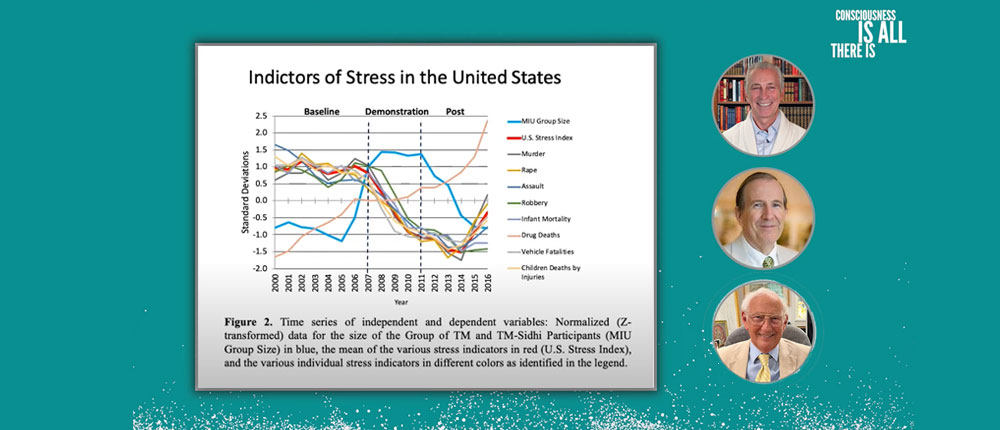How can we begin to understand this remarkable phenomenon? How can a group of people meditating together lower crime? Dr. Tony Nader and scientists Dr. David Orme-Johnson and Dr. Ken Cavanaugh discuss the findings that every individual in the population contributes to national consciousness and, reciprocally, national consciousness influences everyone?
The research is focused on the Advanced Techniques of the Transcendental Meditation Program and shows how large groups of people practicing this technique have a large positive effect on society, with significant decreases in the national homicide rate, motor vehicle fatality rate, drug-related death rate, violent crime rate, infant mortality rate, and fatality rate for other accidents.
Listen in as they discuss the results and what this could mean for lowering the overall stress of our society and our world. Stay tuned for Part 2!
Links:
Orme-Johnson, D. W., Cavanaugh, K. L., Dillbeck, M. C., & Goodman, R. S. (2022). Field-effects of consciousness: A seventeen-year study of the effects of group practice of the Transcendental Meditation and TM-Sidhi programs on reducing national stress in the United States. World Journal of Social Science, 9(2).
Dillbeck, M. C., & Cavanaugh, K. L. (2016). Societal violence and collective consciousness: Reduction of U.S. homicide and urban violent crime rates. SAGE Open, April-June, 1-16.
Cavanaugh, K. L., & Dillbeck, M. C. (2017). The contribution of proposed field effects of consciousness to the prevention of U.S. accidental fatalities: Theory and empirical tests. Journal of Consciousness Studies, 24(1-2), 53–86.
Dillbeck, M. C., & Cavanaugh, K. L. (2017). Group Practice of the Transcendental Meditation® and TM-Sidhi® Program and Reductions in Infant Mortality and Drug-Related Death: A Quasi-Experimental Analysis. SAGE Open, January-March, 1-15. https://journals.sagepub.com/doi/10.1177/2158244017697164
Cavanaugh, K. L., & Dillbeck, M. C. (2017). Field Effects of Consciousness and Reduction in U.S. Urban Murder Rates: Evaluation of a Prospective Quasi-Experiment. Journal of Health and Environmental Research, 3(3-1), 32-43. https://www.sciencepublishinggroup.com/journal/paperinfo?journalid=344&doi=10.11648%2Fj.jher.s.2017030301.13



